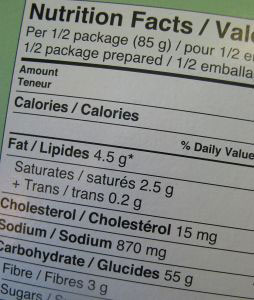 Researchers at Tufts University looked at 10 frozen food items and 20 restaurant meals and found that they are serving up more than what dieters are asking for. According to a new study published in the Journal of the American Dietetic Association, prepared foods may contain an average of 8% more calories than their package labels own up to and restaurant meals may contain a whopping 18% more. Some individual restaurant items contained up to 200% more calories than expressed on the menu.
Researchers at Tufts University looked at 10 frozen food items and 20 restaurant meals and found that they are serving up more than what dieters are asking for. According to a new study published in the Journal of the American Dietetic Association, prepared foods may contain an average of 8% more calories than their package labels own up to and restaurant meals may contain a whopping 18% more. Some individual restaurant items contained up to 200% more calories than expressed on the menu.
Eeek! What’s a dieter to do? Well, before you go throwing out your food journal read this article for some perspective. Without question, this study suggests a potential threat to weight loss for people who are counting calories as a means to weight loss. Yes, it would be great if the FDA stepped in and said “Hey, these labels need to be more accurate.” But if you wait for the government to change a regulation you’ll be old and gray before you reach your weight goal. So, take matters into your own hands with these simple tips.
1. Eat more foods that don’t come with a label. It just so happens that foods that don’t come with a label (and you know what I’m going to say here) like fresh fruits and vegetables are naturally low in calories and high in fiber. They have lots of nutrients. You get more full off of fewer calories. The more often you can eat these foods, the less you’ll need to worry about an error in a label or on a menu. Have pear slices and a piece of reduced fat cheese for a healthy snack instead of the 3 p.m. vending machine run.
2. Eat more mindfully. Be realistic. Hunger and weight management is way more than counting calories. It’s about fullness and satisfaction, too. When you eat out, ask yourself “Where are the vegetables”? Fresh, steamed and broiled veggies can help keep calories lower. Start your dinner off with a simple garden salad dressed in a little vinegar and olive oil instead of greasy appetizers. Can you order a healthy dish that serves a lean protein and veggies on the side? Can you slow down the pace of your bites? Finish before the plate is clean. Even better, pause when you are about half done and get a sense of how full you are and how much you really need for hunger. When you don’t make the food there’s a lot nutritionally that is out of your hands. Do your best to choose something that will nourish you and you will enjoy at the same time. Get in the habit of sharing food, leaving food or taking it home.
3. Journal several days a week. The bottom line is you can’t expect anyone to care more about your weight loss than you. Nobody is going to do it for you so who cares if the labels are off. Accept that you can learn a lot from writing down what and how much you eat. If you are a computer person, you can use free websites and iPhone apps to track your food intake really easily. These programs use USDA databases that are known for their accuracy. But don’t expect your tracking to be 100% on the money. There could be lots of human error in your own portion estimates. Know that this exercise is more than “bean counting,” it’s about awareness. Check your journal for two to three fruits and at least four veggie servings a day, maybe more. Check for low sodium and high fiber. Be honest with yourself and ask “What is going well and what can I work on?”.
These tips provide winning habits anyone can use to trim down, regardless of any potential food label snafus.
Watch now as Rebecca explains how to read a food label.
